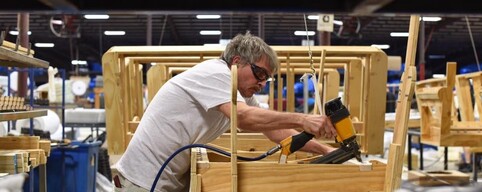

The wood and furniture sector in Sardinia represents one of the most significant industries for the regional economy. With a turnover close to half a billion euros, this sector contributes 1.3 percent of the region's GDP, highlighting its economic importance. However, despite its economic significance, the sector is facing several challenges that could affect its future growth.
A major concern for the wood and furniture industry in Sardinia is the recent slowdown in exports. In 2024, the industry experienced a significant decline in exports of 9.6 percent from the previous year. This decrease has negatively affected the industry's economy, as foreign sales are a crucial source of revenue. The reasons behind this decrease are diverse and include global economic factors, changes in international demand, and problems related to logistics and distribution.
The export slowdown has not only affected revenues, but also forced local companies to review their market strategies. Some companies are trying to diversify their product lines to better adapt to the new demands of the international market, while others are trying to consolidate their presence in local markets to make up for the losses incurred abroad. In any case, the situation requires a strategic and flexible response to meet the challenges posed by the international economy.
An additional obstacle for the wood and furniture industry is the shortage of skilled labor. Currently, the industry faces a 37 percent difficulty in finding skilled workers. This problem is not new, but it has become particularly acute in recent years and threatens to further restrain innovation and growth in the industry. The lack of skilled workers can limit the ability of firms to expand production, improve product quality and meet technological challenges.
To address this shortage, many companies are investing in training programs and partnerships with local educational institutions to attract and train new talent. In addition, there is growing interest in adopting automated technologies to compensate for labor shortages, although this approach requires new investments and the acquisition of specific skills. Ultimately, to sustain growth and address labor shortages, it is essential for the industry to develop long-term strategies focused on training and modernization.
A recent study conducted by the Study Office of Confartigianato Imprese Sardegna, based on Istat data, provided an in-depth analysis of the characteristics and dynamics of wood and furniture enterprises in Sardinia. This study identified a total of 856 enterprises operating in this sector, each working in their own workshops to offer a wide range of products and services, from furniture and furnishings to wood and cork objects and materials. The analysis highlighted the diversification of the sector, including manufacturers and repairers, upholsterers, carpenters, and makers of wood and cork objects.
The research also underscored the vitality of the sector, which despite current difficulties, continues to be a mainstay of the regional economy, supporting not only households but also government and local communities. Trade activities play a key role in connecting local production to broader markets, making the issue of logistics and efficient distribution critical.
The analysis by the Confartigianato Study Office was a crucial tool to better understand the challenges and opportunities of the sector, providing valuable insights into priority areas of intervention to support and revitalize the entire wood and furniture supply chain in Sardinia. Strategic planning, supported by timely data and analysis, is essential to navigate the future and ensure sustainable growth.



